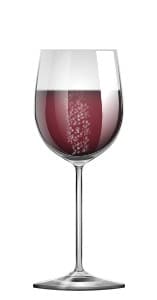Trying to simplify by type of wine and with aging in mind, here are my recommendations:
- A glass with a medium bowl and slightly narrower mouth for white, rosé, and young red wines and also for bubbles
- A taller, larger goblet with a wide bowl for more structured and important reds
- A small goblet for sweet and dessert wines
- A small tulip-shaped goblet for fortified wines and brandies
A goblet that narrows upward allows greater concentration of scents toward the nose, enhancing the perception of aromas and limiting their dispersion.
A large, pot-bellied goblet, in addition to facilitating the swirling movement of the glass to oxygenate the wine, which needs to "open up," that is, to better develop its aromatic complement, allows the bouquet to be captured in more complex and structured wines.
And for bubbles? Wider glasses are increasingly preferred: where bubbles and aromas develop better than in the classic sparkling wine flute, now used only for holiday toasts.
For sweet and raisin wines, the goblet is smaller because the amount to be poured is smaller than for other wines, and because this type of wine does not require ample and prolonged oxygenation.
For fortified wines and brandies, the goblet is also small but tulip-shaped.
One can also opt for the universal goblet (each glassmaker suggests its own model), which goes more or less well with every type of wine, from bubbles to reds, and which also simplifies our set-up, since it can be matched with any water glass, even decorated or colored.











